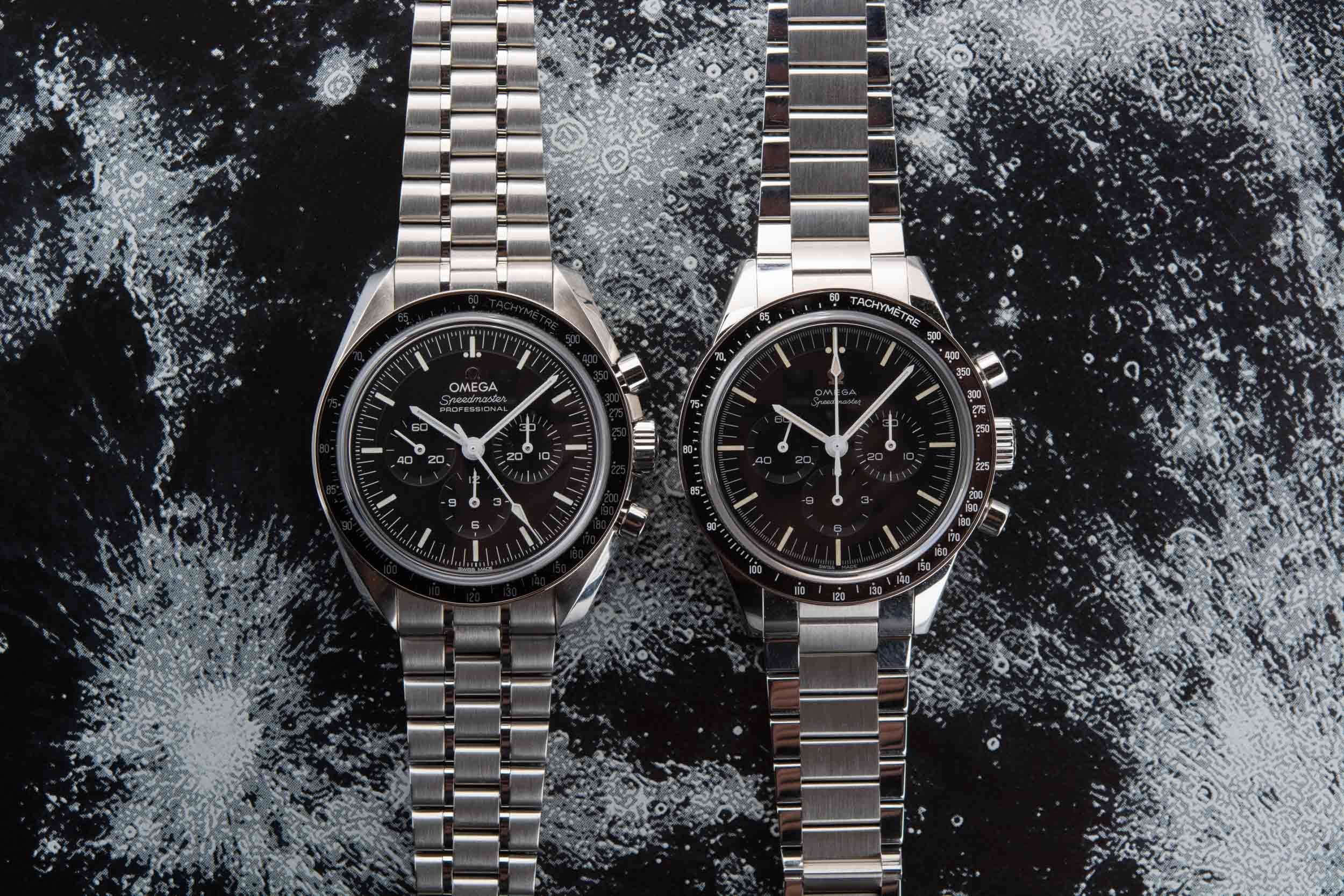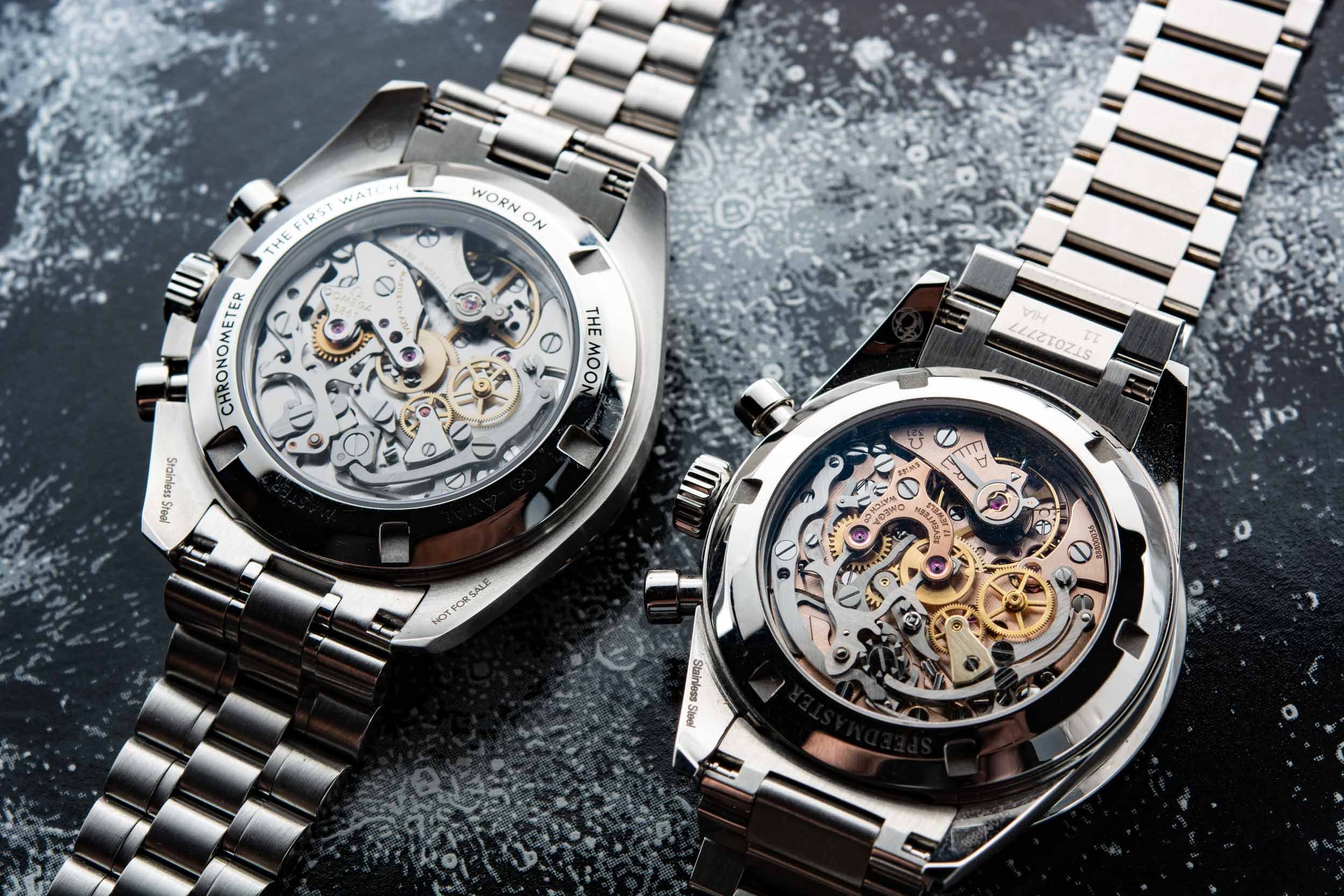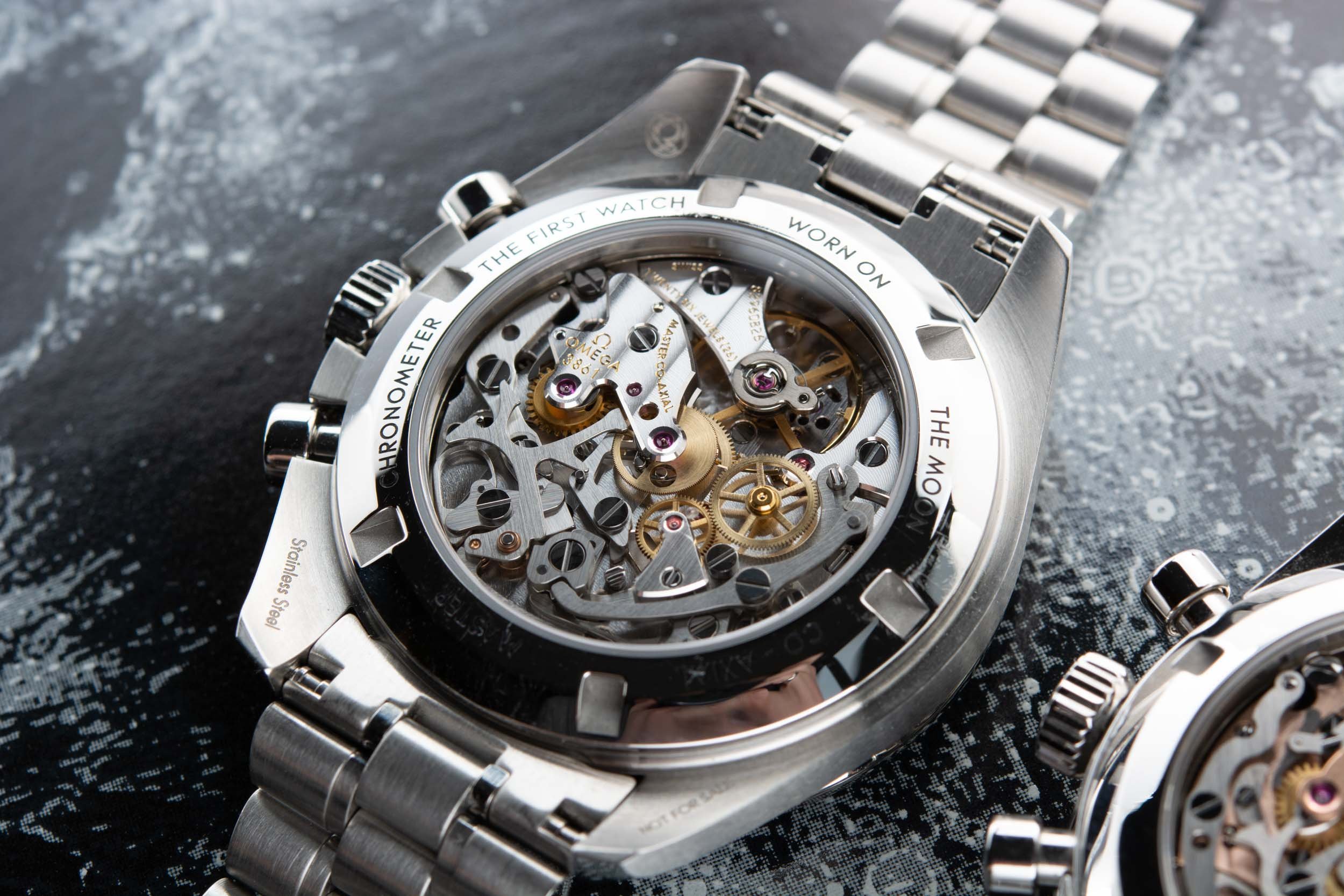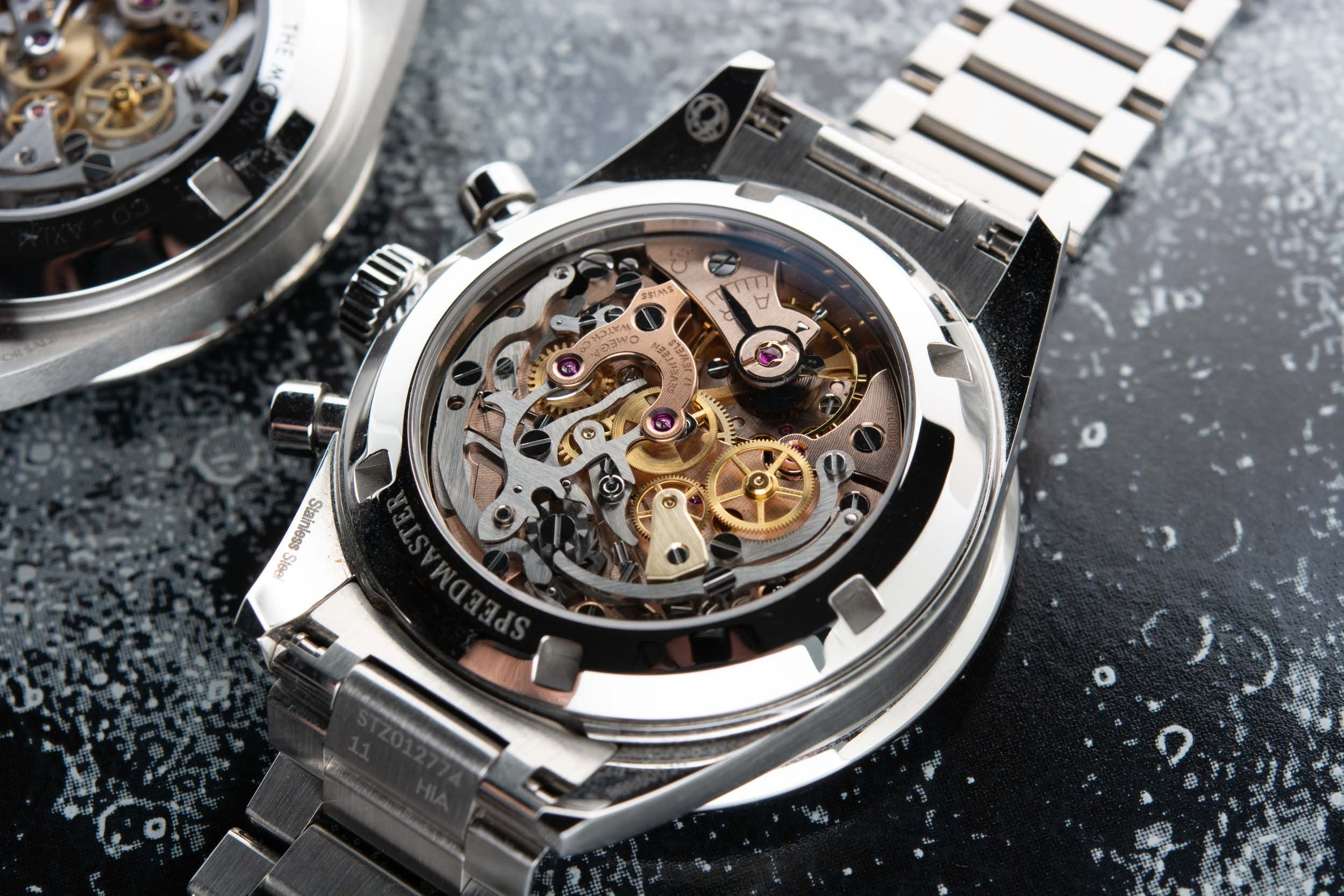Speedy Tuesday Video: Omega Speedmaster Moonwatch Master Chronometer Vs. Omega Speedmaster “Ed White” 321
Last year, on a Tuesday, Omega introduced the Speedmaster “Ed White” powered by the caliber 321. Exactly one year later, Omega introduced its new Moonwatch Master Chronometer.
We’ve been asked by several readers and viewers (of our Moonwatch Master Chronometer video), to have a closer look at the new Moonwatch with sapphire crystal and the Speedmaster “Ed White”. The price tag of the limited production Speedmaster “Ed White” is nearly twice that of the new Moonwatch Master Chronometer with sapphire crystal. How come? What are the differences? In this video, I try to explain what these differences are.
Moonwatch Master Chronometer vs. Ed White
Let me start by writing that there’s no winner. There is no right choice or wrong choice — no good or bad. The new Speedmaster Moonwatch Master Chronometer is a modern watch, that retains a lot of elements of the original 42mm Moonwatch models from the 1960s.
The Ed White was introduced last year, as the first steel watch to have the new caliber 321. With a hefty price tag (€14,000), it raised a lot of eyebrows. Nevertheless, the Speedmaster Ed white is incredibly popular and due to its limited production. Consequently, it has a long waitlist around the world. It was also the winner of our successful Speedmaster World Cup game last year, which included 32 special Speedmaster models.
3rd and 4th generation Speedmasters
While the 39.7mm Speedmaster Ed White reference 311.30.40.30.01.001 is based on the 3rd generation of Speedmasters (105.003), the new Speedmaster Professional Moonwatch Master Chronometer is influenced by the following generation, the 105.012. That’s the watch that Buzz Aldrin had on his wrist when he set foot on the Moon. In this video, we compare it to the sapphire edition of the new Moonwatch Master Chronometer, reference 310.30.42.50.01.002. Besides the sapphire crystal on the front, this version also has a sapphire case back, an applied logo, and a slightly different bracelet from the Hesalite version. All of that can be read in this article.
It was only a matter of time before the question would pop up: Why is the Ed White twice as expensive as the new Moonwatch with sapphire? And is the caliber 3861 (or 321) a better movement?
Caliber 3861
The difference in price is not an easy explanation. The production process of the Speedmaster Ed White is very different from the industrialized production of the Moonwatch Master Chronometer. There’s more traditional watchmaking involved with the Ed White, whereas the Moonwatch Master Chronometer is a modern watch with a number of recent innovations on board. I’ve witnessed the production process of both models in the Omega manufacture in Biel. But in the end, these are two very similar-looking watches leaving the same building.
Caliber 3861 is a Master Chronometer movement, that has been subject to shock tests (5000g), accuracy tests after being exposed to magnetic fields (tested to withstand fields of at least 15,000 gauss), accuracy test with different remaining power reserves, accuracy test at different temperatures, and positions.
Crucially, this takes place after the movement has been cased-up. When a watch passed all tests, it gets the Master Chronometer certification by METAS. The accuracy of the Speedmaster Moonwatch Master Chronometer at a +5/-0 daily rate. Those parameters mean no slow running watches.
Caliber 321
In the more expensive Omega Speedmaster “Ed White” we’ll find the new caliber 321. We discussed it in detail in the past (here, for example). The movement is basically a perfect re-production of the second generation of caliber 321 movements. Instead of the old copper coating, it now has a Sedna plated finish. It ticks at 18,000vph and has an accuracy of +11/-1 seconds per day on average. It does not have a Co-Axial escapement, nor a Master Chronometer certification. There are no anti-magnetic alloys, no silicon, no modern nonsense whatsoever — it is purely old school.
There is, however, a beautiful column-wheel control component for the chronograph complication. This is a nod to the past when Omega used these movements in its Speedmasters from 1957 till 1968. You have to appreciate it because if you don’t, there is no point in spending €14,000 on this watch when there’s a Moonwatch Master Chronometer that will cost you €7,100 (or less when you go for the Hesalite model). This watch is for those who appreciate the column-wheel chronograph movement, its assembly by hand, and the one watchmaker per watch approach.
Enjoy the video, and let us know in the comments which watch you would pick!




